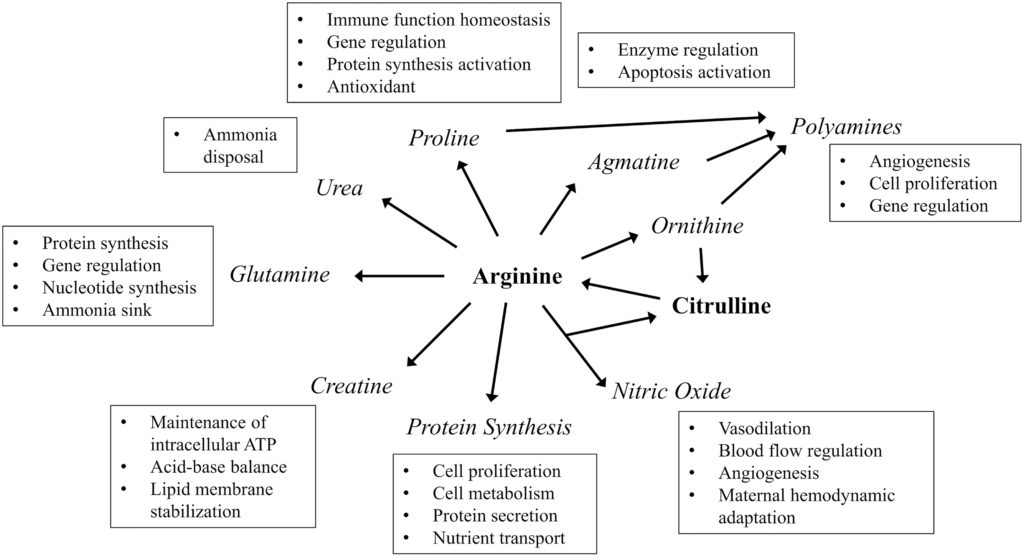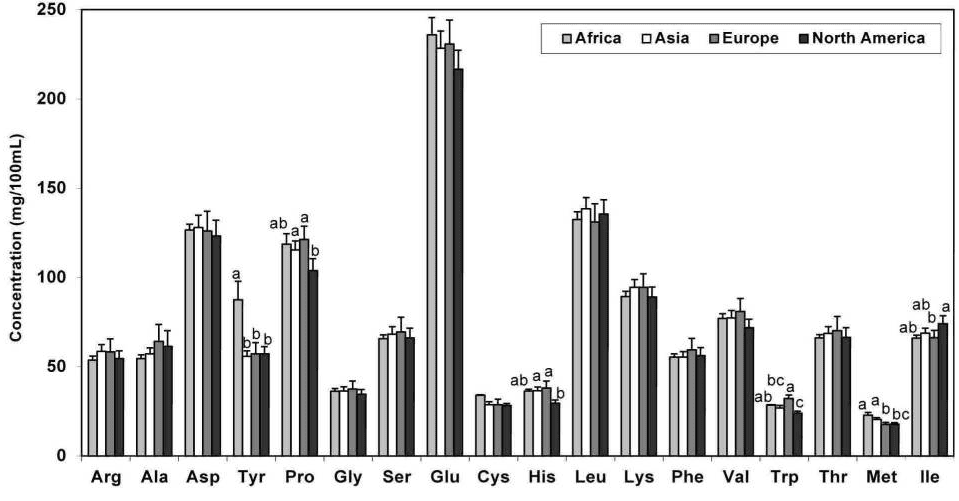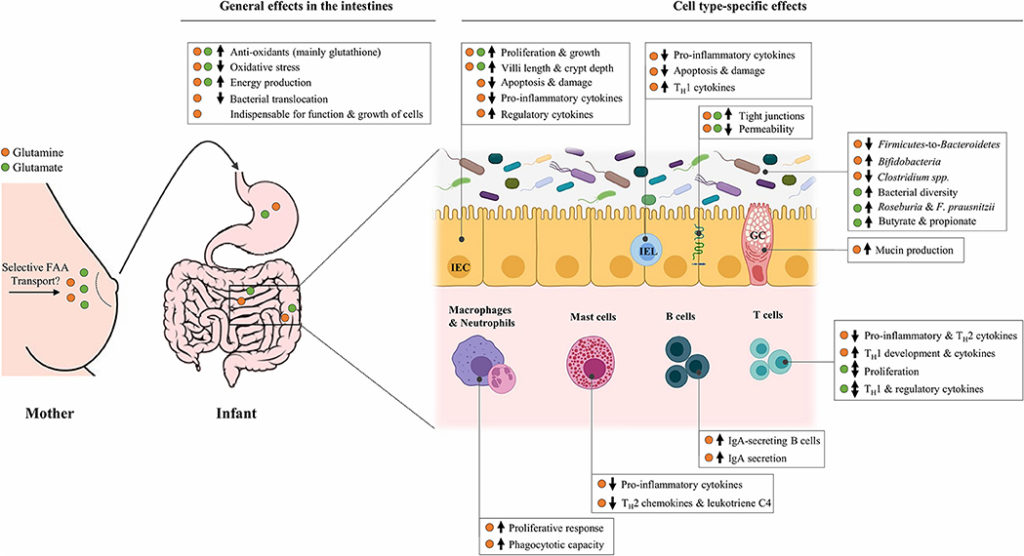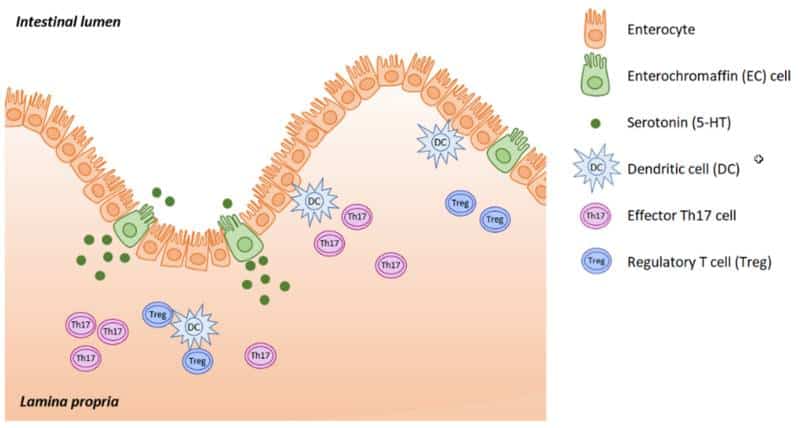
Vishakha Mahajan
(Ph.D. in Health Sciences (Molecular Biology), MSc. Reproductive and Developmental Biology, BSc. Biological Sciences and Health Policy Administration)
Jump to:
Amino acids are the fundamental building blocks of proteins that play a crucial role in various aspects of our biology. As they are involved in:
- synthesis of hormones and neurotransmitters
- supporting immune function
- contributing to tissue repair and muscle growth
they are essential for our health and wellbeing.
Types of Amino Acids
From a total of 20 amino acids that are crucial for humans, nine of them must be acquired from the diet. These are known as essential amino acids (EAA).
Non-essential amino acids (NEAA), by contrast, are synthesised by the human body endogenously. Despite being termed as “non-essential” these amino acids are indispensable to various physiological processes.
RELATED — What are Amino Acids and what is their role in keeping us healthy?
Each of these uniquely contribute toward growth and development during the early life stages, regulating mood and stress during adolescence and preserving our brain health as we age.
Essential amino acids | Non-essential amino acids |
Histidine | Alanine |
Isoleucine | Glutamic acid |
Leucine | Asparagine |
Lysine | Aspartic acid |
Methionine | Cysteine* |
Phenylalanine | Arginine* |
Threonine | Glutamine* |
Tryptophan | Glycine* |
Valine | Proline* |
Serine* | |
Tyrosine* |
*Arginine, cysteine, glutamine, tyrosine, glycine, proline, and serine are conditionally essential amino acids.
Conditionally essential amino acids are usually considered non-essential under normal circumstances and must be acquired from dietary intake, but can become essential and synthesised by our bodies due to specific illnesses or stress.[1]

Foods that contain all 9 EAA are referred to as complete proteins. Some are listed below.
Animal-based | Plant-based |
Eggs | Quinoa |
Chicken/Turkey | Soy |
Salmon/Tuna | Chia Seeds |
Meat | Buckwheat |
Cheese, yogurt | Hemp seeds |
The role of EAAs and NEAAs across life stages, their implications in brain health and in neurological disease have been long-studied, but recent discoveries have deepened our understanding of the specific mechanisms of individual amino acids.
Prenatal and Postnatal development and amino acids
During prenatal development, amino acids are vital for the proper growth and formation of the fetus, contributing to the development of organs, muscles, and the nervous system.
Arginine and glutamine play a crucial role during prenatal and postnatal development.
Arginine
Arginine serves as a precursor for various biologically important molecules such as nitric oxide and polyamines, which are essential during pregnancy and fetal development.[2]
Classified as a “semi-essential” amino acid, arginine can be obtained through dietary sources such as:
- meat
- dairy products
- eggs
- nuts
- seeds
as well as synthesised endogenously through the conversion of citrulline.
Nitric oxide supports placental growth and enhances maternal-fetal blood flow, ensuring adequate supply of nutrients and oxygen.
Polyamines regulate gene expression, influencing embryo growth, and differentiation.[2]
Altered arginine metabolism and nitric oxide levels are associated with pregnancy complications like:
- intrauterine growth retardation (IUGR)
- pre-eclampsia and gestational diabetes mellitus (GDM)[3]
Due to arginine’s role in synthesising various bioactive molecules of critical importance, it is considered as a conditionally essential amino acid during pregnancy.[4]

Arginine is conditionally essential amino acid during pregnancy
Glutamate
Glutamate is another important amino acid, serving as a precursor for arginine synthesis. Due to its increased need during fetal growth, glutamine is also considered conditionally essential during pregnancy and postnatal development.
A growing body of evidence suggests that the well-balanced amino acid composition present in human breast milk significantly impacts infant growth and development.
The total amino acid (TAA) composition of human milk includes protein-bound and free amino acids. Free amino acids, which account for 5-10% of TAA, are more readily absorbed by the infant, carrying wide-spread implications.[5]
Glutamate has a significant role in the fetal immune system and intestinal health
The amino acid composition of breast milk is dynamic and influenced by various factors, including maternal diet and geography.

A 2013 systematic review evaluated amino acid profiles in term and preterm breast milk from women worldwide, and it found that glutamine is the most abundantly present free amino acid in human milk, comprising nearly ~50% of total amino acids.[6]
Glutamine is the most abundant free amino acid in human milk
Glutamine levels for instance, are nearly 20 times higher in mature milk than in colostrum, and amino acid concentrations are generally higher in preterm milk compared to term milk, likely to support the rapid growth rates of premature infants.[6]

Glutamine serves as an energy substrate for intestinal epithelial cells (IECs) and immune cells and is a precursor for glutathione, which has protective, anti-oxidative effects that help reduce oxidative stress.[5]
Beyond infancy, glutamine continues to impact:
- learning
- memory
- cognition
and plays a crucial role in neuroplasticity and neurotransmission, thereby maintaining overall brain health and function into adulthood.[7]
Adolescence and Adulthood and amino acids
Tyrosine, tryptophan and phenylalanine are crucial during the adolescent years due to the rapid brain development. These amino acids play a key role in synthesising neurotransmitters that regulate:
- mood
- cognition
- sleep
Tyrosine and Phenylalanine
Tyrosine and phenylalanine synthesise dopamine and norepinephrine, which are essential for cognitive functions such as attention, motivation and learning, tryptophan is essential for the production of serotonin and melatonin.
During adolescence, there is an increased reliance on learning and memory. The intake of habitual dietary tyrosine through daily nutrition was evaluated in 341 younger (aged 24-40 years) adults and 1383 older (aged 61-88 years) adults.
The findings highlight the overall advantage of daily intake of tyrosine on cognitive function, in both the groups and further suggest a positive effect on working memory, episodic memory and fluid intelligence.[8]
Tryptophan
Sleep and mood regulation are vital to adolescent health as disturbed sleep impacts physical and cognitive development.[9]
RELATED — Why we sleep: The role of sleep in our healthy life
Both obesity and elite sports, common amongst teens, are linked to sleep disruptions. Obesity affects hunger perception, leading to increasing food intake, while elite sports, characterised by high training volumes, late exercises, and travel, contribute to sleep disruptions.
Serotonin, synthesised from tryptophan, is a precursor for melatonin. Both, serotonin and melatonin help regulate the sleep-wake behaviour, making tryptophan an essential amino acid.[9]
A randomised controlled trial suggests that ingesting tryptophan through a diet positively impacts the regulation of the sleep/wake cycle and improves sleep quality in male adolescents experiencing sleep disturbances.[9]
While the study has limitations, it does advocate for a non-pharmacological approach that emphasises on nutritional quality, recommending protein sources rich in tryptophan such as meat and dairy as well fruits such as pineapples, bananas and kiwifruit.
However, the availability of dietary tryptophan to the brain is a nuanced process. How much tryptophan crosses the blood brain barrier to reach the site of action depends on the concentrations of other amino acids that use the same transport mechanism, such as phenylalanine, tyrosine, leucine, isoleucine and valine.
Evidence suggests that consuming carbohydrate-rich foods can raise insulin levels, promoting the uptake of competing amino acids into muscles, leaving more tryptophan in the bloodstream.[10] However, associated risks of high-GI diets in conditions like obesity and diabetes must be considered.
Acute tryptophan depletion (ATD) studies show that reduced brain serotonin levels lead to lowered mood, which has been attributed to lowered serotonin synthesis.[11]
Additionally, tryptophan depletion also leads to altered brain nitric oxide, reduced brain-derived neurotrophic factors and reduced kynurenine pathway metabolites.[11] Thus highlighting the wide-spread impact of tryptophan on sleep, mood and cognition.
High carbohydrate diet negatively impacts tryptophan levels in the brain
In a study, tryptophan-rich, bioavailable dietary supplement from egg protein hydrolysate was given to 29 healthy women aged 45-65 years. Bioavailable tryptophan was suggested to have beneficial effects on emotional and cognitive functions with an increase in “high-energy mood state”.[12]
In another study with 53 healthy males it was revealed that acute mental stress increases phenylalanine/tyrosine (PHE/TYR) and kynurenine/tryptophan (KYN/TRP) levels while, chronic mental stress reduces PHE/TYR, suggesting immunological suppression.[13] These findings emphasise the role of stress-induced inflammation in altering amino acid metabolism and immune responses.
Neuroinflammation has been implicated in several neurodevelopmental, psychiatric and neurodegenerative disorders.
Serotonin
Serotonin, a neurotransmitter that is synthesised by tryptophan plays an important role in regulating immunity and inflammation.[14]
Most serotonin is produced in the gut, and released into the lamina propria, where it interacts with immune cells such as the regulatory T cells and dendritic cells.[14] The crosstalk between the gut and the brain via the gut-brain axis, influences the immune activation and inflammation in response to neurodegenerative disorders.[14]

Neuroinflammation has been associated with altered tryptophan metabolism. A study investigating the tryptophan/kynurenine pathway as a potential biomarker of neuroinflammation in a cohort of 14 patients finds an imbalance in the neuroprotective vs neurotoxic metabolites.[15]
In an interventional study in Japan, researchers aimed to explore the effects of taking five amino acids on mental health and cognition in healthy office workers aged 20-65 years.[16] The amino acids selected were:
- serine
- alanine
- glutamate
- aspartate
- tyrosine
all of which have been individually studied to display neuroprotective effects.
In this four week exploratory trial, office workers subjected to transient mental workload reported that supplementing with these five amino acids regulated motivation and cognitive function during the recovery period.[16]
Related Questions
1. What are the symptoms of not having enough amino acids in the diet?
Common signs of insufficient amino acid intake include:
- fatigue
- mood swings
- brittle hair/nails
- weakened immunity.
2. What depletes amino acids?
A low-protein diet, chronic stress, malabsorption disorders, or inability to break down proteins can deplete or alter amino acid levels, limiting their synthesis and increasing breakdown in the body.
3. What are Branch-Chain Amino Acids (BCAAs)?
BCAAs refer to three essential amino acids – valine, leucine and isoleucine, due to their branched molecular structure.
BCAAs found in meat, dairy and legumes, are crucial for muscle repair and energy.
References
(1) Moulaee K, Neri G. Electrochemical Amino Acid Sensing: A Review on Challenges and Achievements. Biosensors (Basel). 2021 Dec 7;11(12):502.
(2) Hsu CN, Tain YL. Impact of Arginine Nutrition and Metabolism during Pregnancy on Offspring Outcomes. Nutrients. 2019 Jun 27;11(7).
(3) Luiking YC, Ten Have GAM, Wolfe RR, Deutz NEP. Arginine de novo and nitric oxide production in disease states. Am J Physiol Endocrinol Metab. 2012 Nov 15;303(10):E1177-89. Available from: https://www.ncbi.nlm.nih.gov/pmc/articles/PMC3517635/
(4) Satterfield MC, Edwards AK, Bazer FW, Dunlap KA, Steinhauser CB, Wu G. Placental adaptation to maternal malnutrition. Reproduction [Internet]. 2021 Oct 1 [cited 2024 Aug 21];162(4):R73–83. Available from: https://rep.bioscientifica.com/view/journals/rep/162/4/REP-21-0179.xml
(5) van Sadelhoff JHJ, Wiertsema SP, Garssen J, Hogenkamp A. Free Amino Acids in Human Milk: A Potential Role for Glutamine and Glutamate in the Protection Against Neonatal Allergies and Infections. Front Immunol. 2020 May 28;11. Available from: https://www.frontiersin.org/journals/immunology/articles/10.3389/fimmu.2020.01007/full
(6) Zhang Z, Adelman A, Rai D, Boettcher J, Lőnnerdal B. Amino Acid Profiles in Term and Preterm Human Milk through Lactation: A Systematic Review. Nutrients. 2013 Nov 26;5(12):4800–21. Available from: https://www.ncbi.nlm.nih.gov/pmc/articles/PMC3875913/
(7) Pal MM. Glutamate: The Master Neurotransmitter and Its Implications in Chronic Stress and Mood Disorders. Front Hum Neurosci [Internet]. 2021 Oct 29 [cited 2024 Jun 17];15. Available from: https://www.ncbi.nlm.nih.gov/pmc/articles/PMC8586693/
(8) Kühn, Simone et al. “Food for thought: association between dietary tyrosine and cognitive performance in younger and older adults.” Psychological research vol. 83,6 (2019): 1097-1106. doi:10.1007/s00426-017-0957-4. Available from: https://www.ncbi.nlm.nih.gov/pmc/articles/PMC6647184/
(9) Saidi O, Rochette E, Doré É, Maso F, Raoux J, Andrieux F, et al. Randomized Double-Blind Controlled Trial on the Effect of Proteins with Different Tryptophan/Large Neutral Amino Acid Ratios on Sleep in Adolescents: The PROTMORPHEUS Study. Nutrients [Internet]. 2020 [cited 2024 Aug 21];12:1885. Available from: https://www.ncbi.nlm.nih.gov/pmc/articles/PMC7353359/
(10) Herrera CP, Smith K, Atkinson F, Ruell P, Chow CM, O’Connor H, et al. High-glycaemic index and-glycaemic load meals increase the availability of tryptophan in healthy volunteers. [cited 2024 Aug 24]; Available from: https://doi.org/10.1017/S0007114510005192
(11) Young SN. Acute tryptophan depletion in humans: a review of theoretical, practical and ethical aspects. J Psychiatry Neurosci. 2013;38(5). Available from: https://www.ncbi.nlm.nih.gov/pmc/articles/PMC3756112/
(12) Mohajeri MH, Wittwer J, Vargas K, Hogan E, Holmes A, Rogers PJ, et al. Chronic treatment with a tryptophan-rich protein hydrolysate improves emotional processing, mental energy levels and reaction time in middle-aged women. British Journal of Nutrition. 2015 Jan 28;113(2):350–65. Available from: https://www.cambridge.org/core/journals/british-journal-of-nutrition/article/chronic-treatment-with-a-tryptophanrich-protein-hydrolysate-improves-emotional-processing-mental-energy-levels-and-reaction-time-in-middleaged-women/AB54DC8C47AF5C589B87EDD30B382386
(13) Hüfner K, Galffy M, Egeter J, Giesinger JM, Arnhard K, Oberacher H, et al. Acute and Chronic Mental Stress both Influence Levels of Neurotransmitter Precursor Amino Acids and Derived Biogenic Amines. Brain Sci. 2020 May 26;10(6):322. Available from: https://www.ncbi.nlm.nih.gov/pmc/articles/PMC7349276/
(14) Kanova, Marcela, and Pavel Kohout. “Serotonin-Its Synthesis and Roles in the Healthy and the Critically Ill.” International journal of molecular sciences vol. 22,9 4837. 3 May. 2021, doi:10.3390/ijms22094837. Available from: https://www.ncbi.nlm.nih.gov/pmc/articles/PMC8124334/
(15) Yan J, Kuzhiumparambil U, Bandodkar A, Bandodkar S, Dale RC, Fu S. Cerebrospinal fluid metabolites in tryptophan‐kynurenine and nitric oxide pathways: biomarkers for acute neuroinflammation. Dev Med Child Neurol. 2021 May 17;63(5):552–9.
(16) Umeda K, Shindo D, Somekawa S, Nishitani S, Sato W, Toyoda S, et al. Effects of Five Amino Acids (Serine, Alanine, Glutamate, Aspartate, and Tyrosine) on Mental Health in Healthy Office Workers: A Randomized, Double-Blind, Placebo-Controlled Exploratory Trial. Nutrients. 2022 Jun 6;14(11):2357.






